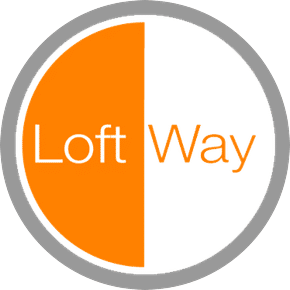There’s a certain rhythm to city life: efficient, electric, and unapologetically fast. It’s what draws people to lofts—open space, exposed structure, light with intention. But more and more, those who thrive in the city are creating space outside it, not by trading in their lifestyle, but by extending it.
This shift has less to do with square footage or prestige and more to do with clarity, privacy, and having a space that stands apart from the skyline yet still mirrors its owner’s sense of style. Among the emerging options, park model homes are subtly reshaping what it means to own a second home—defined less by scale and more by purpose.
Compact, design-forward, and built with character, these cabins aren’t a fallback. They’re a statement, especially for people who know that where you spend your time matters just as much as where you live.
Why Urbanites Are Escaping (Part-Time)
City life rewards momentum. But even the most driven among us are beginning to crave something slower, something personal. The past few years have shifted priorities, making space not just a luxury but a necessity. And it’s no longer unusual for city residents to seek out a second place that feels like an antidote to their primary one.
For many in Los Angeles, that means looking beyond the grid. A second home isn’t about excess; it’s about intention. It’s about having a place that belongs to you, somewhere you can arrive without plans and still feel grounded.
What’s changing is where people are placing value. Peace is becoming just as important as proximity. And when the idea of getting away becomes part of your weekly rhythm, not a once-a-year event, the type of property you invest in shifts, too.
What Makes Park Model Homes So Appealing
One of the biggest draws of second homes right now is the sense of design integrity. Park model homes reflect that shift. With real-wood construction, considered layouts, and an emphasis on texture and form, they feel less like a product and more like a crafted space.
Unlike traditional tiny homes, these cabins are designed to feel grounded. Warm interiors, exposed timber, cathedral ceilings, and porch-forward layouts invite stillness. They offer the essence of a retreat without compromising structure or comfort.
It’s that blend of form and function, polish and presence, that’s drawing urban homeowners to quieter landscapes—out of choice, not necessity.
Design-Forward Living, Even in the Woods
What sets park model homes apart is their attention to design. These aren’t rough cabins. They’re considered environments that reflect modern taste, scaled for simplicity.
Open floor plans, vaulted ceilings, and natural materials create interiors that feel spacious and calm. Every inch has a role, but nothing feels clinical. The best examples evoke clarity, not just efficiency.
Dwell recently spotlighted interiors that make the most of limited square footage through thoughtful planning and intentional styling. That same principle applies here—refined finishes, restrained palettes, and a strong connection to the outdoors create spaces that feel elevated and personal.
The design language is familiar to anyone living in a curated loft. It’s not a departure, but a new context.
Second Home, First-Class Investment
For many buyers, the appeal of a park model home goes beyond aesthetics. These properties also make practical sense. With urban real estate prices continuing to climb, smaller homes in recreational areas are becoming a smart alternative—and, in many cases, a profitable one.
Park model homes are increasingly being used as short-term rentals, vacation properties, or seasonal escapes. Their lower upfront cost and minimal upkeep make them appealing to those looking to diversify a real estate portfolio. They allow buyers to step into ownership without entering a bidding war.
For those already invested in high-design urban properties, this expansion feels natural. The goal isn’t to scale up—it’s to branch out. If smart design in tight quarters is already part of your lifestyle, these space-saving strategies might feel more familiar than you think.
The Next Chapter in Stylish Living
Park model homes are changing how second homes are imagined. They’re compact without feeling limited, and deliberate in ways that resonate with people who see design as part of their identity. For urban homeowners drawn to clean lines, openness, and light, these spaces offer something unexpected: a retreat that reflects who they are, not just where they’ve gone.
Owning a second home doesn’t require something sprawling or remote. It can be efficient, quiet, and tailored—built with the same level of thought you’d bring to your primary space. And in that restraint, there’s space for something rare: stillness, privacy, and a sense of belonging.

